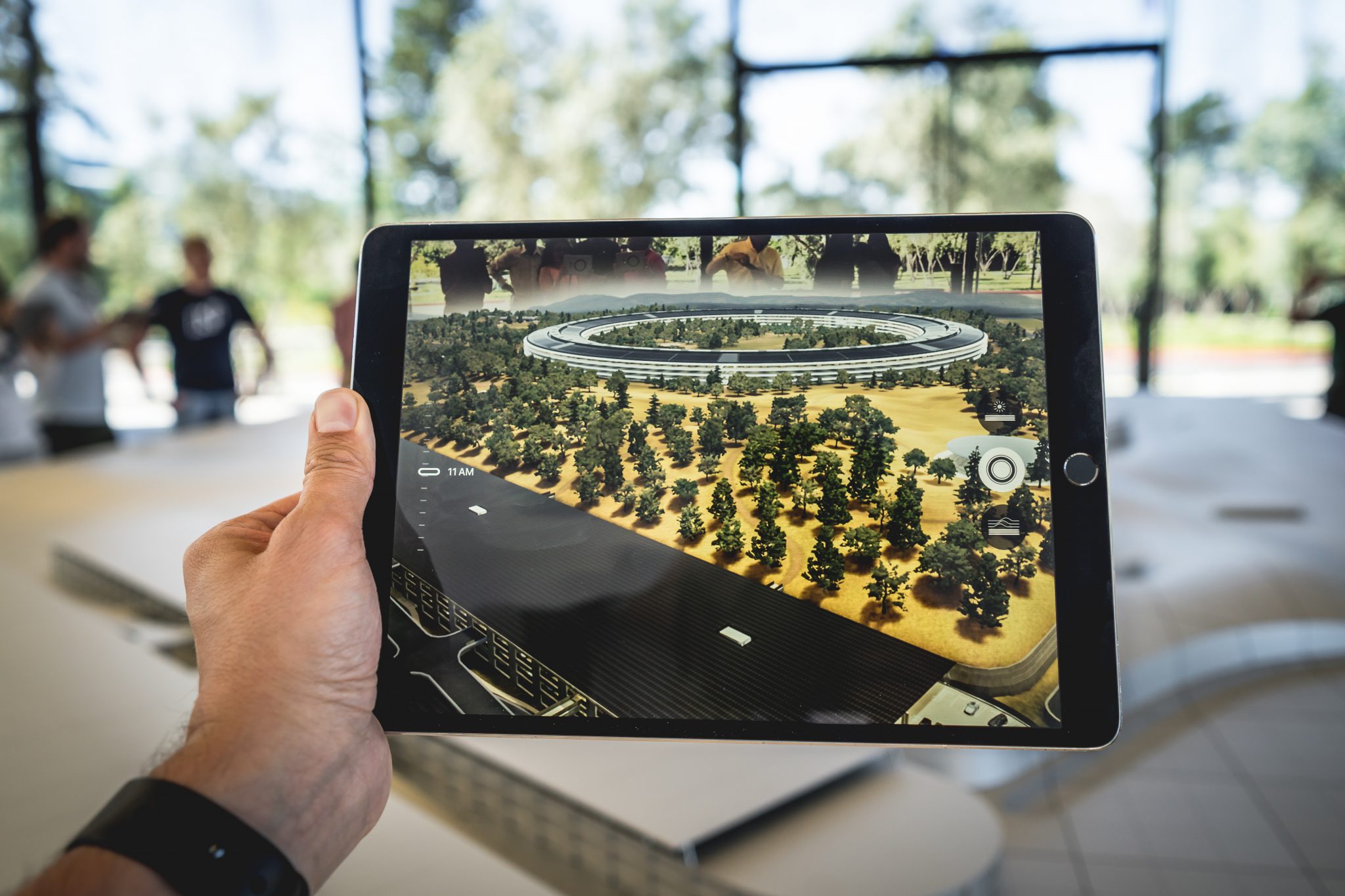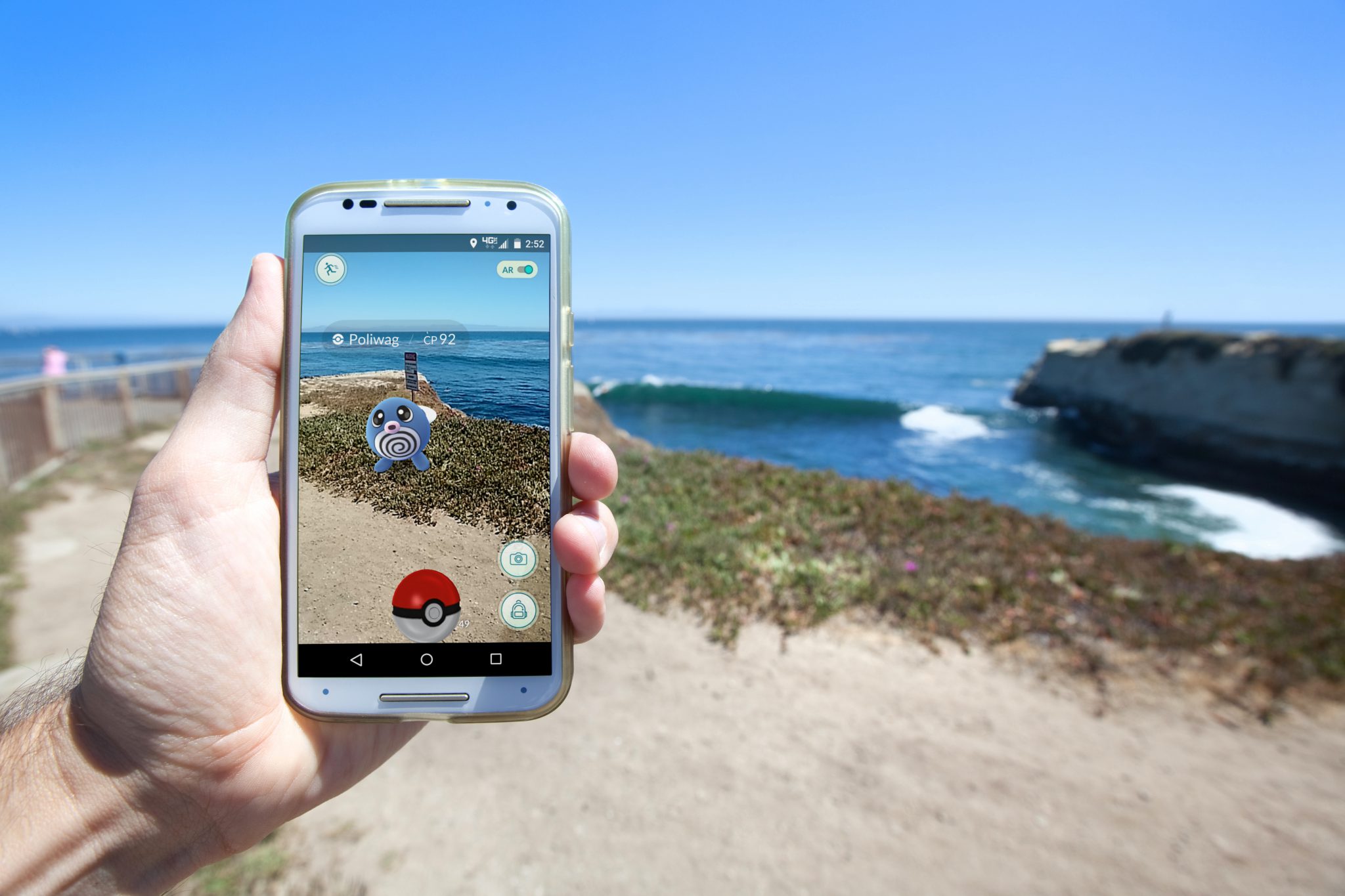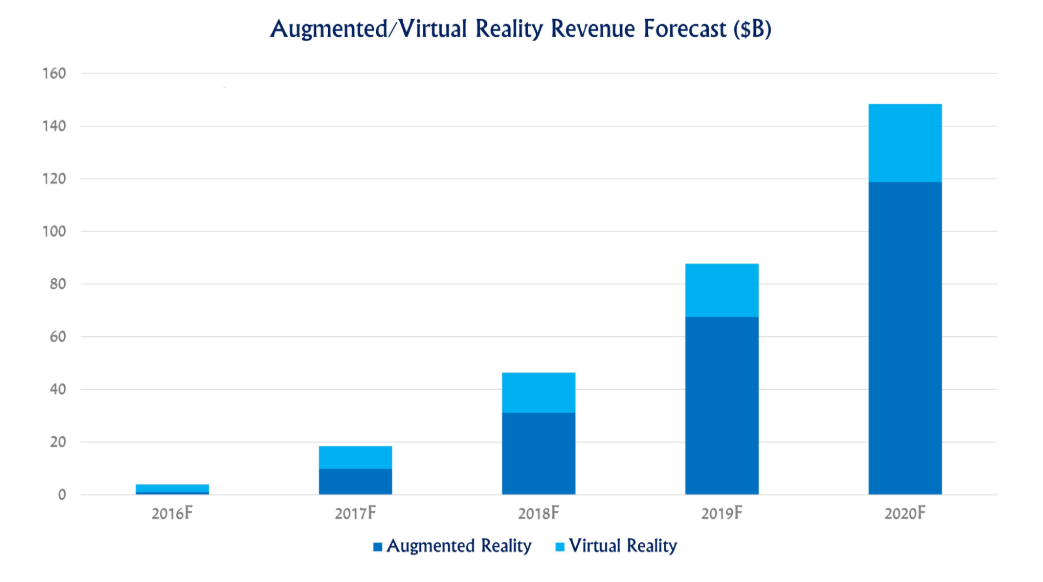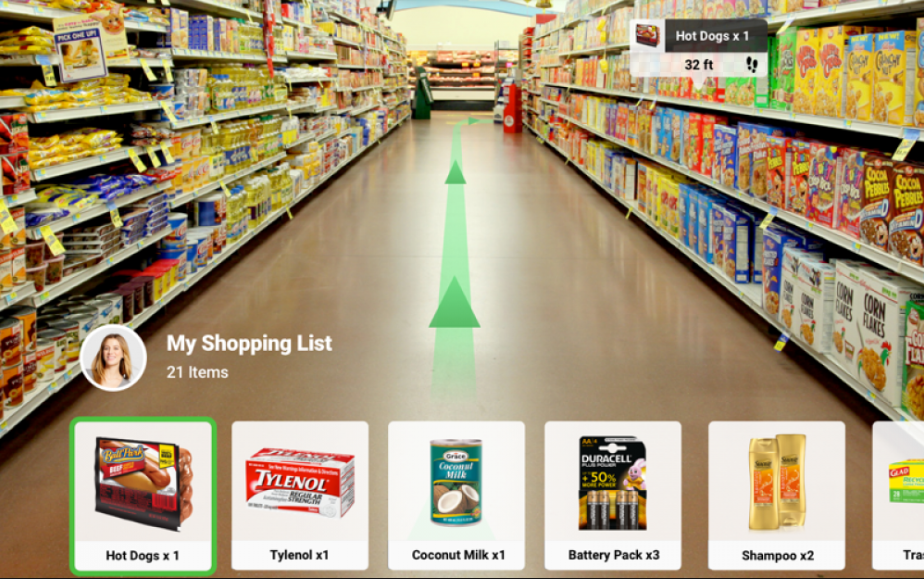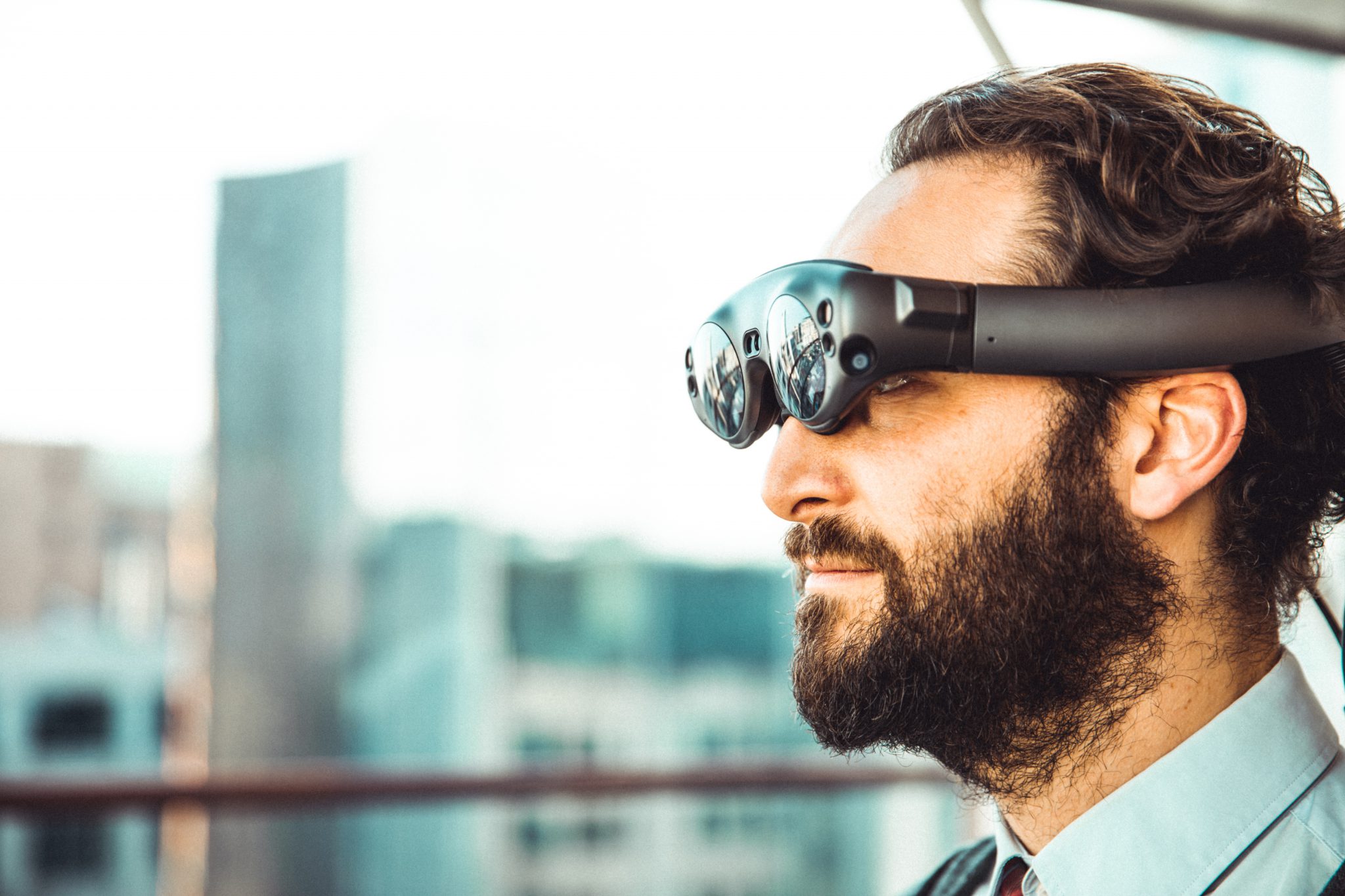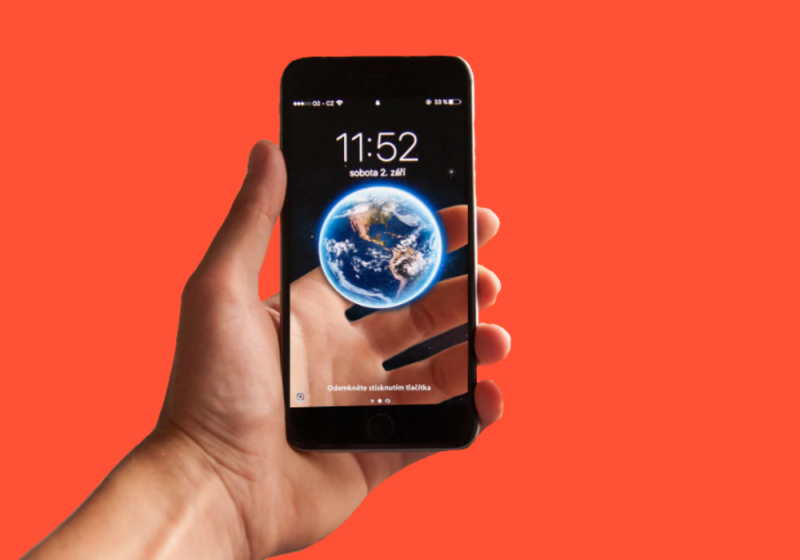
AR in Marketing
An Introduction to AR in Marketing
Technology is advancing at an unprecedented rate. More and more, the real, physical world we occupy seems to be blending with the technological world we have created. And there is no better example of this collision of two worlds than the concept of Augmented Reality. But what is AR? What purpose does it serve? And above all, how is AR changing marketing?
It would be easy to disregard AR as a gimmick. It would the easy option to simply assume that, in reality, it will just be another one of those flash-in-the-pan advances that we see so often. You know the kind of thing.3D TVs, QR codes, Google Glass…Things that came, seemed cool for a short time, then quickly went obsolete and tacky.There’s no question that AR is making pretty big waves at the moment. In fact, it’s anticipated that in 2019, 68.7 million people in the US will make use of Augmented Reality at least once per month. That represents a fifth of the population.But is AR here to stay? Is it just a glorified QR code? Or can AR genuinely represent a huge opportunity for you and your business?In this blog we’re going to take a look at what AR actually is, how it is currently being applied in the world, and how AR is changing marketing in 2019.
What is Augmented Reality?
Before we go anywhere, we need to ensure you have a strong grasp of what AR actually is. Essentially, AR is the overlaying of the real world with computer-generated elements. We should point out at this point that it is an entirely distinct concept from VR, or virtual reality.Virtual reality is an entirely immersive experience in which the user has a computer-generated, 3D world built around them that they can interact with. There is no element of the real world involved. AR is the blending of computer-generated elements with the world we inhabit.It requires no bulky headset to use, and the technology is usually accessed through a standard mobile phone. Because of this, AR is the more commonly used technology and is taking a more established position in the minds of consumers. It may be less talked about or easier to forget about due to its less invasive nature, but AR is being used far more than its immersive counterpart. Because Augmented Reality goes beyond being simply entertaining.AR shot to the forefront of the public eye with the release of Pokemon Go in 2016, the AR game in which animated creatures were superimposed in real-world locations. But, the first uses of AR were in fact functional.
For example, some of the first genuinely useful implementations of AR technology came in fighter jets. Pilots could view controls on the dome of the jet to minimise distraction. We’ve all seen graphics projected onto sports pitches to identify markings and distance, and this represents another functional use of AR.And now AR can be a really valuable marketing tool. In fact, if businesses can afford to leverage AR, they do. Almost 90% of businesses with an annual revenue of more than $100 million dollars have begun to leverage AR in their own marketing campaigns. Smaller businesses are all looking towards AR as a new way to market their business, to differentiate themselves, to stand out. And when you consider that the AR industry is predicted to expand to$35.22 billion by 2022, with a revenue forecast of almost $120 billion by 2020, you can see why.In fact, by 2020, it’s supposed that a staggering 1 billion people will be using Augmented Reality. The fact that users can access the technology through a smartphone means that it is sure to become a staple medium through which to market to and engage audiences.
It seems clear that AR isn’t a trend that’s just going to go away. It is a steadily growing market and one that you should be aiming to exploit if you want to keep up with or stand out from the competition. But you need to be careful not to use AR for the sake of using AR. If your efforts just come across as gimmicky, or if you don’t really offer any true benefit to the user, you’re missing the point. There was a time where simply including AR in your marketing strategy could attract customers. But relying on the novelty factor isn’t going to work when AR becomes more and more commonplace. To be effective, the element of AR in your marketing campaign has to:
- Provide meaningful interaction with your brand.
- Provide some sort of added value to the user.
- Allow a new level of convenience and speed for the user.
But how can you achieve this with your brand? How can you go beyond simply projecting a computer-generated object onto a camera screen and calling it ‘ingenious’? Let’s take a quick look at some good examples of businesses using AR so that you can see how businesses are leveraging Augmented Reality in their marketing campaigns and understand why it can be so effective.
Augmented Reality in Marketing
1. Try-Before-You-Buy
Snapchat had a huge part to play in bringing AR to the attention of the masses. The filters they use may just seem like a fun gimmick, but when applied in the right way they can offer real value. Some businesses have realised the potential of this technology and adopted it to take the ‘try-before-you-buy’ concept to a whole new level. For example, Sephora, the beauty and cosmetics company, have developed the Sephora to Go App that allows users to virtually try on 1000s of lip colours.
Topology Eyewear have adopted a similar strategy, allowing their users to order glasses crafted from scratch after using their app. The app allows the user to virtually try on different styles and order glasses made specifically to fit their head shape.In each of these examples, the business is clearly providing value to the customer. The feature is highly personalised and meaningful and takes the perks of convenience and speed to new heights.
No longer does a user have to visit a physical store, try a number of different physical products, not find the right one, have to send back products that aren’t quite right, etc. Now, the customer can conduct everything from their smartphone, saving huge amounts of time and effort. And saving money for the businesses mentioned. Sephora don’t need to manufacture sample products, and Topology don’t need to produce glasses that sit on display cases for customers to try on. And this is only the tip of the ‘try-before-you-buy’ iceberg.IKEAallow you to test out and virtually place pieces of furniture in your home by using AR technology. Amazon has started to offer previews of certain products andDuluxallows the interior decorator inside you to run wild, without having to use a single drop of paint.
Consider the reduction in product returns this results in. Think about how much you could spur a customer on to purchase if they can see how great your product looks in their home or in action. Virtual interaction with a product is a great way to implement Augmented Reality in your marketing strategies.
2. Information at the User’s Fingertips
Imagine moving to a new area and going for your first weekly shop in a new, mysterious supermarket. Imagine if you had an assistant with you at all times. An assistant that told you exactly where all items in the store were, that told you the nutritional value of every item you went to buy, that told you about any allergens in an item…This possibility is virtually within reach thanks to AR. As well as superimposing computer-generated objects onto the real world, AR can be used effectively to bring a customer’s attention to information that might otherwise be lost in a crowd of clutter.
Remember how we said that a user experience should be made faster and more convenient by AR? What if you were in a supermarket and wanted to find a particular product? AR could locate it for you in the store. What if you wanted to know if it included gluten or nuts? AR could tell you before you’ve even got to the product. Developing a streamlined, efficient customer experience is a great way to leverage AR for your own business. If you own a physical store, then this could be a great option for you.Or what if you were looking for the right platform in a train station? What if you were searching for the right floor outside an elevator? The right office building? AR has the potential to make the customer experience unbelievably smooth. If you can offer value to the customer in this way through the use of AR, then you would be using it right.
3. Bring Your Brand to Life
Effective branding is all about great storytelling. Once you capture the imagination of a consumer with a great story, you’re in with a great chance withconverting them from a prospective buyer into a brand advocate. The purpose of your brand story is to inspire emotion in your audience. You want them to feel something. This is what makes your brand memorable, and consumers buy from memorable brands that make an impression upon them.
With AR, the user can go from passive observer to interactive participant. Interacting with a brand through a screen is far more memorable than simply watching an ad that may as well be happening in the background. AR represents an opportunity for your brand to open up an entirely new channel of communication with your audience by involving them. Your storytelling can be improved hugely by including interaction with your brand.
Now, this isn’t as easy as it sounds. Truly offering up a great storytelling experience for an audience member goes beyond simply animating an image on a label or a billboard, you need to work out a way to genuinely engage customers that won’t view your AR marketing as just another gimmick. Finding a way to project the essence of your brand is a challenge that faces a lot of businesses. Users just aren’t overwhelmed by the thought of a sign coming to life and talking, the interaction must go deeper than that.
Remember, simply aiming to offer up entertainment with AR isn’t enough. When you tell the story of your brand through this medium, you need to search for the ways in which you can simultaneously offer a user something of value. Always keep this thought in mind when you consider how you are going to communicate your brand story to your audience.
How AR is Changing Marketing
AR is bringing users more time, more convenience and more freedom. It has opened up an opportunity for marketers to upgrade the way they build the customer journey. Whether that’s by providing the customer with the opportunity to conduct easy and effective product research, an easy way to gather information before purchase or by truly engaging them with a brand story, the effectiveness of AR is not to be underestimated.
It’s been reported that if a user interacts with AR, businesses can achieve “dwell times of over 85 seconds, interaction rates of up to 20% and click-through rates to purchase of 33%”. These numbers reflect the fact that AR works in marketing.
For now. The fact is, AR is still relatively new. The novelty factor does remain. This is what you need to be so careful of should you choose to implement it in your own campaigns.
Don’t go down the easy route of using AR for the sake of it. Don’t simply aim to ‘wow’ users with a feature that in a few years’ time will be as obsolete as the floppy disk. You need to take into account the fact that all your customers will be able to access AR with their smartphones virtually anywhere. And as a species, we’ve shown that if a new concept doesn’t offer us tangible value, we will humour it for a short time, then view it as tacky and unnecessary. As technology advances quickly, you need to identify how you can use AR to actually provide a use for your customers because once you have done this, you will have cracked into a ground-breaking market with huge potential.
Try Demo – Filed, Marketing Software
Follow us on Instagram for blog updates – Instagram, Filed AI
